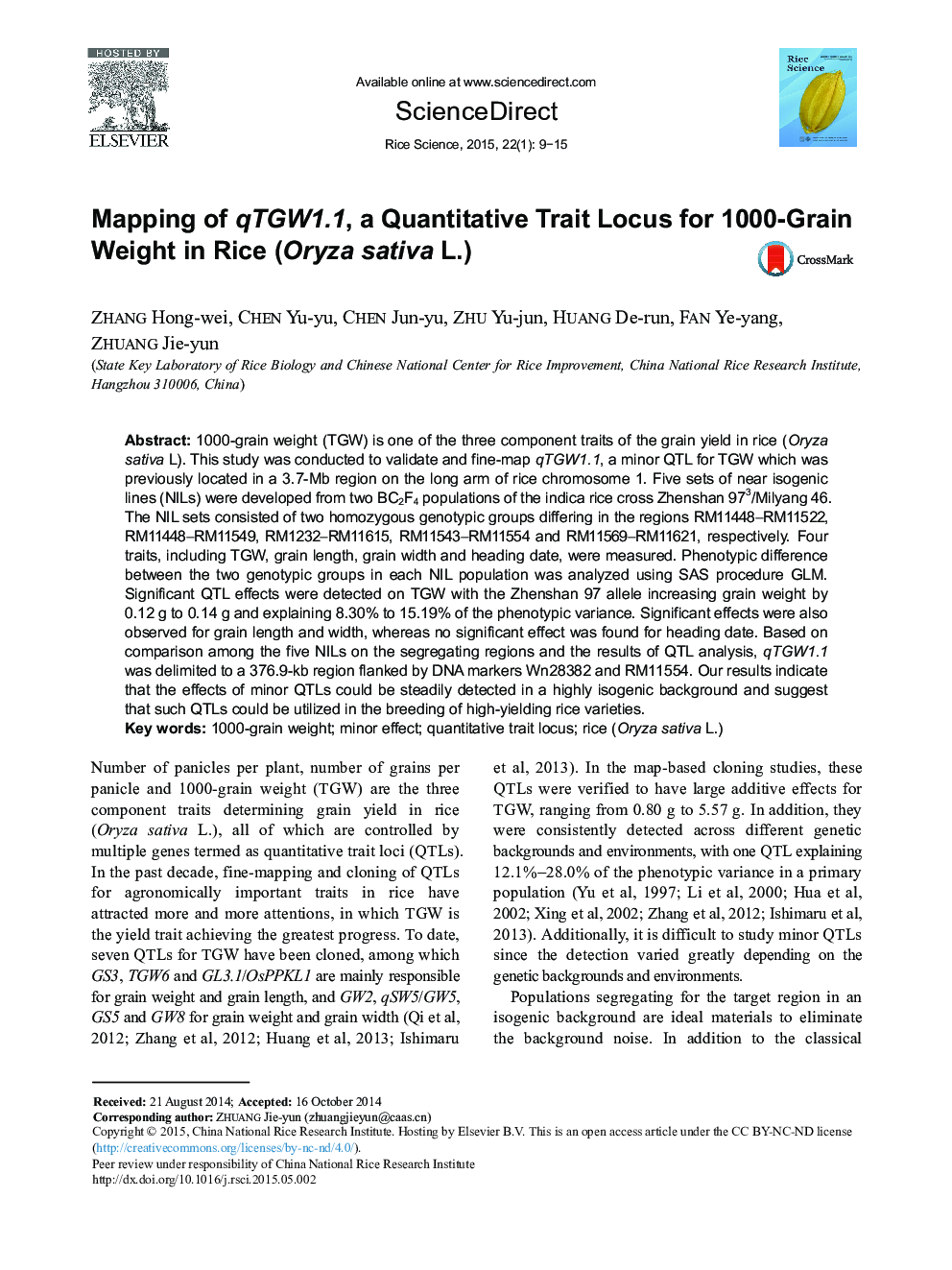| کد مقاله | کد نشریه | سال انتشار | مقاله انگلیسی | نسخه تمام متن |
|---|---|---|---|---|
| 4501782 | 1320502 | 2015 | 7 صفحه PDF | دانلود رایگان |

1000-grain weight (TGW) is one of the three component traits of the grain yield in rice (Oryza sativa L). This study was conducted to validate and fine-map qTGW1.1, a minor QTL for TGW which was previously located in a 3.7-Mb region on the long arm of rice chromosome 1. Five sets of near isogenic lines (NILs) were developed from two BC2F4 populations of the indica rice cross Zhenshan 973/Milyang 46. The NIL sets consisted of two homozygous genotypic groups differing in the regions RM11448−RM11522, RM11448−RM11549, RM1232−RM11615, RM11543−RM11554 and RM11569−RM11621, respectively. Four traits, including TGW, grain length, grain width and heading date, were measured. Phenotypic difference between the two genotypic groups in each NIL population was analyzed using SAS procedure GLM. Significant QTL effects were detected on TGW with the Zhenshan 97 allele increasing grain weight by 0.12 g to 0.14 g and explaining 8.30% to 15.19% of the phenotypic variance. Significant effects were also observed for grain length and width, whereas no significant effect was found for heading date. Based on comparison among the five NILs on the segregating regions and the results of QTL analysis, qTGW1.1 was delimited to a 376.9-kb region flanked by DNA markers Wn28382 and RM11554. Our results indicate that the effects of minor QTLs could be steadily detected in a highly isogenic background and suggest that such QTLs could be utilized in the breeding of high-yielding rice varieties.
Journal: Rice Science - Volume 22, Issue 1, January 2015, Pages 9–15